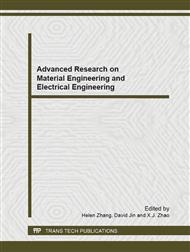p.213
p.218
p.222
p.227
p.231
p.235
p.242
p.246
p.251
The Numerical Simulation and Design of the Electrical Heating System for Electric Conductive Ultra-High-Temperature-Ceramics Test Specimen
Abstract:
Serving as an important thermal segregation material for air and space vehicles, zirconium diboride has to suffer ultra-high-temperature that might be over 2700°C. However, the highest working temperature we can achieve for the testing of the mechanical properties of such kind of materials is less than 1500 °C. Moreover, the high temperature furnaces are low-usage, and have along experimental period. Making use of the satisfactory electrical and thermal conductivities, we could heat a Zirconium diboride specimen with electrical current. The electrical heating of a Zirconium diboride specimen is simulated with the commercial available finite element code ABAQUS. The temperature and cooling of copper electrodes and that of collets, is also analyzed, and the temperature distributions are obtained. In order to achieve reasonable distribution of temperature in the specimen, the copper electrodes and the collets, the corresponding cooling facilities is designed, and the cooling liquids are selected.
Info:
Periodical:
Pages:
231-234
Citation:
Online since:
March 2013
Authors:
Price:
Сopyright:
© 2013 Trans Tech Publications Ltd. All Rights Reserved
Share:
Citation:


